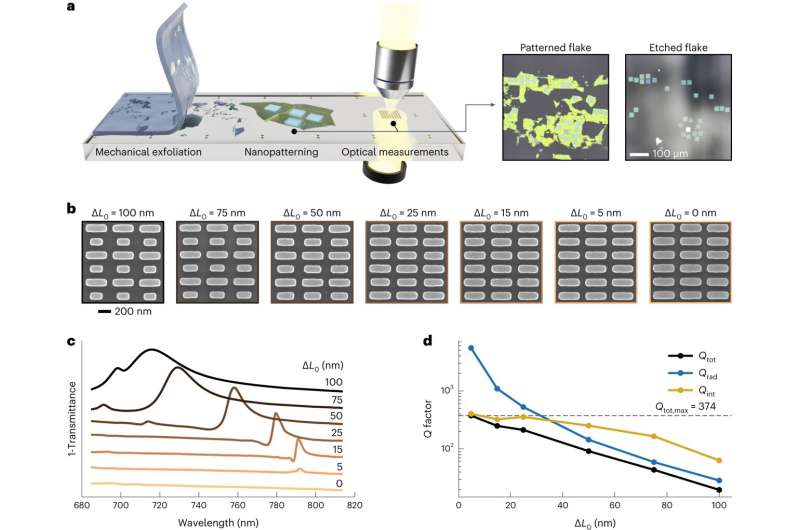This article has been reviewed according to Science X's editorial process and policies. Editors have highlighted the following attributes while ensuring the content's credibility:
fact-checked
peer-reviewed publication
trusted source
proofread
Metasurface enables strong coupling effects between light and transition metal dichalcogenides

The interaction of light and matter on the nanoscale is a vital aspect of nanophotonics. Resonant nanosystems allow scientists to control and enhance electromagnetic energy at volumes smaller than the wavelength of the incident light. As well as allowing sunlight to be captured much more effectively, they also facilitate improved optical wave-guiding and emissions control. The strong coupling of light with electronic excitation in solid-state materials generates hybridized photonic and electronic states, so-called polaritons, which can exhibit interesting properties such as Bose-Einstein condensation and superfluidity.
A new study, published in the journal Nature Materials, presents progress in the coupling of light and matter on the nanoscale. Researchers led by LMU physicist Dr. Andreas Tittl have developed a metasurface that enables strong coupling effects between light and transition metal dichalcogenides (TMDCs). This novel platform is based on photonic bound states in the continuum, so-called BICs, in nanostructured tungsten disulfide (WS2).
The simultaneous utilization of WS2 as the base material for the manufacture of metasurfaces with sharp resonances and as a coupling partner supporting the active material excitation opens up new possibilities for research into polaritonic applications.
An important breakthrough in this research is controlling the coupling strength, which is independent of losses within the material. Because the metasurface platform is able to integrate other TMDCs or excitonic materials without difficulty, it can furnish fundamental insights and practical device concepts for polaritonic applications. Moreover, the concept of the newly developed metasurface provides a foundation for applications in controllable low-threshold semiconductor lasers, photocatalytic enhancement, and quantum computing.
More information: Thomas Weber et al, Intrinsic strong light-matter coupling with self-hybridized bound states in the continuum in van der Waals metasurfaces, Nature Materials (2023). DOI: 10.1038/s41563-023-01580-7
Journal information: Nature Materials
Provided by Ludwig Maximilian University of Munich





















